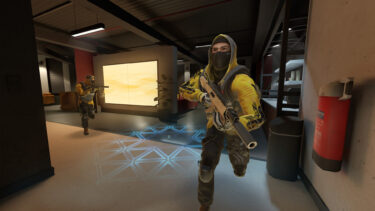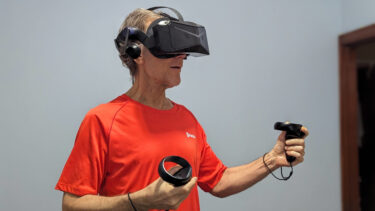An upcoming Pimax Crystal software update activates its eye-tracking hardware and foveated rendering, unlocking higher resolution even on my aging PC VR system.
The Pimax Crystal has impressive specifications, most notably a super-sharp display that compares favorably to Varjo’s Aero while coming in at a significantly lower price. However, some of the Crystal’s best features weren’t available at launch.
The latest update, which will roll out soon to everyone, enables the Crystal’s eye-tracking hardware. That unlocks avatar animation and foveated rendering. Standalone mode is still in progress, but we already know some of the titles launching with the Crystal’s standalone mode.
VRChat avatar animation
With eye-tracking enabled, I can animate my VRChat avatar with natural eye movement while wearing the Pimax Crystal. Realistic eye movement can make a big difference in social apps.
![]()
Blinks are also detected and reflected in VR, so I can wink, pretend to drift off with my eyes drooping, and close my eyes as if asleep or meditating. Expanded avatar control is helpful and allows more natural communication.
The only downside is that everyone I interact with gets the benefit of this upgrade, while I’m left looking at the simulated eye movement of others. That means, we need more devices that include eye-tracking hardware.
Foveated rendering is impressive
Foveated rendering has a greater impact on my PC VR experience. I prefer VR gaming over VRChat but rely on a computer and GPU that are three years old. My system works great when using AirLink with my Meta Quest 2 and Quest Pro, but the Pimax Crystal has much greater graphics potential.
With an 11th Gen Intel Core i5-11400 and an Nvidia GeForce RTX 3060 Ti, my gaming works best at moderate resolutions. When I first tested a Pimax Crystal, I had to reduce resolution significantly to prevent overloading my GPU, which reduces frame rates and can cause stuttering.
The Crystal is capable of showing 2880×2880 pixels per eye. That’s sharper than the Varjo Aero. However, if my GPU can’t process that many pixels quickly enough, I might as well stick with a more affordable VR headset. That’s where foveated rendering saves the day and enables higher resolution without buying a new GPU.
The fovea, located at the center of the retina in the back of our eyes, contains more of the cells responsible for vision. Foveated rendering takes advantage of that design, maximizing resolution where I look while lowering quality in my peripheral vision.
The Pimax Crystal has three options for foveated rendering: minimum, balanced, and maximum. I chose maximum foveation and also set the render resolution to maximum.
![]()
In SteamVR, this equated to a render resolution of 4312×5100 pixels per eye. The results are incredibly sharp. The eye-tracking samples 120 times each second, so it adjusts rapidly as my eyes move, and I couldn’t detect any loss of quality at the edges.
The frame rate was good and steady, without changing render or quality game settings. I tried a variety of games, including Half-Life:Alyx, Propagation VR, and Star Wars: Droid Repair Bay. Everything worked and ran well despite my aging computer.
Pimax shared a sampling of customer reports who noted the results of using foveated rendering (FR) on different games and GPUs.
Nvidia GeForce RTX 4070 Ti:
Nvidia GeForce RTX 3080 Ti:
Nvidia GeForce RTX 4090:
Pimax Crystal’s foveated rendering provides about a 30% improvement in frame rate on most Nvidia GPUs across a variety of games, enabling high-resolution graphics for more people without requiring an upgrade to a more powerful PC VR system.
Source: Mixed News




